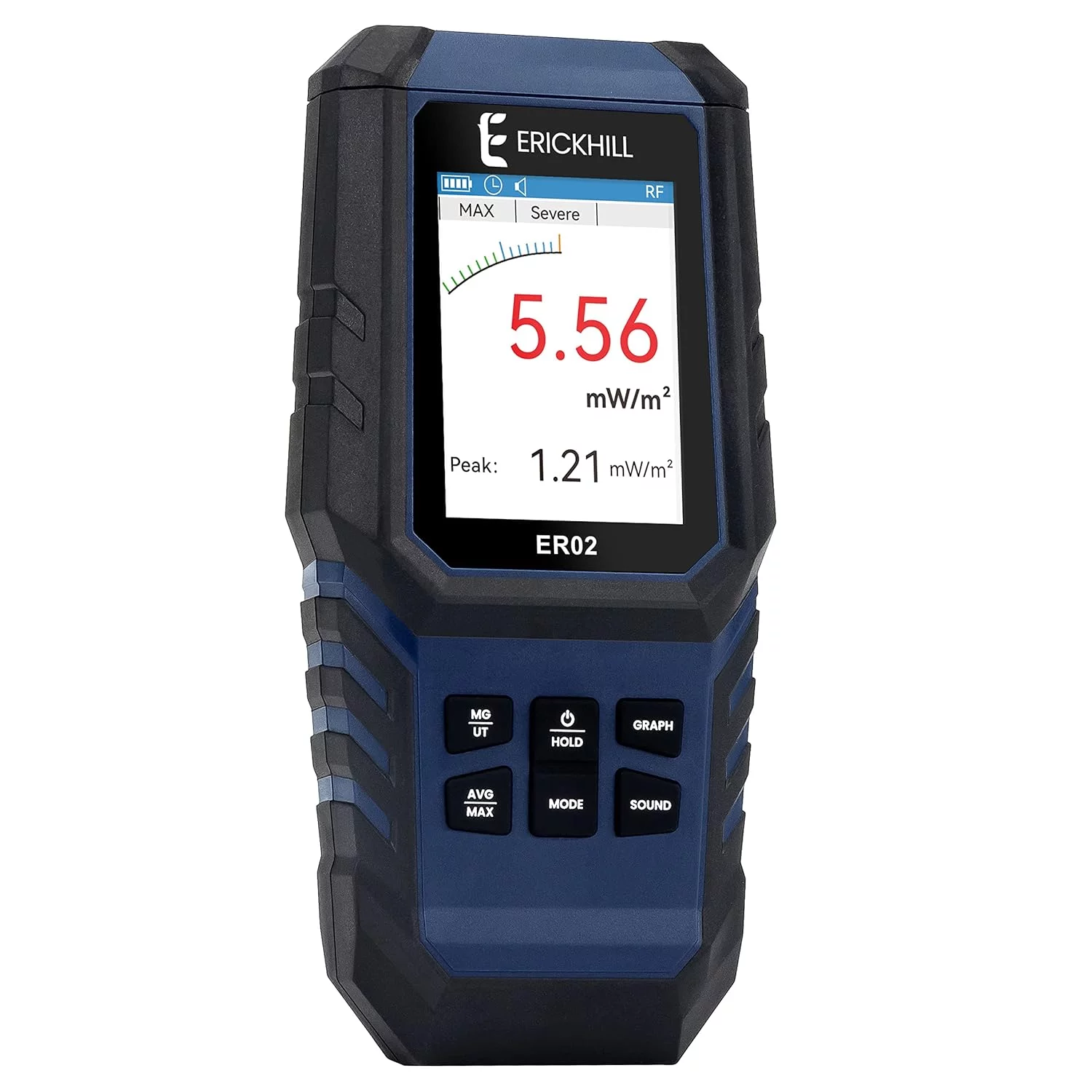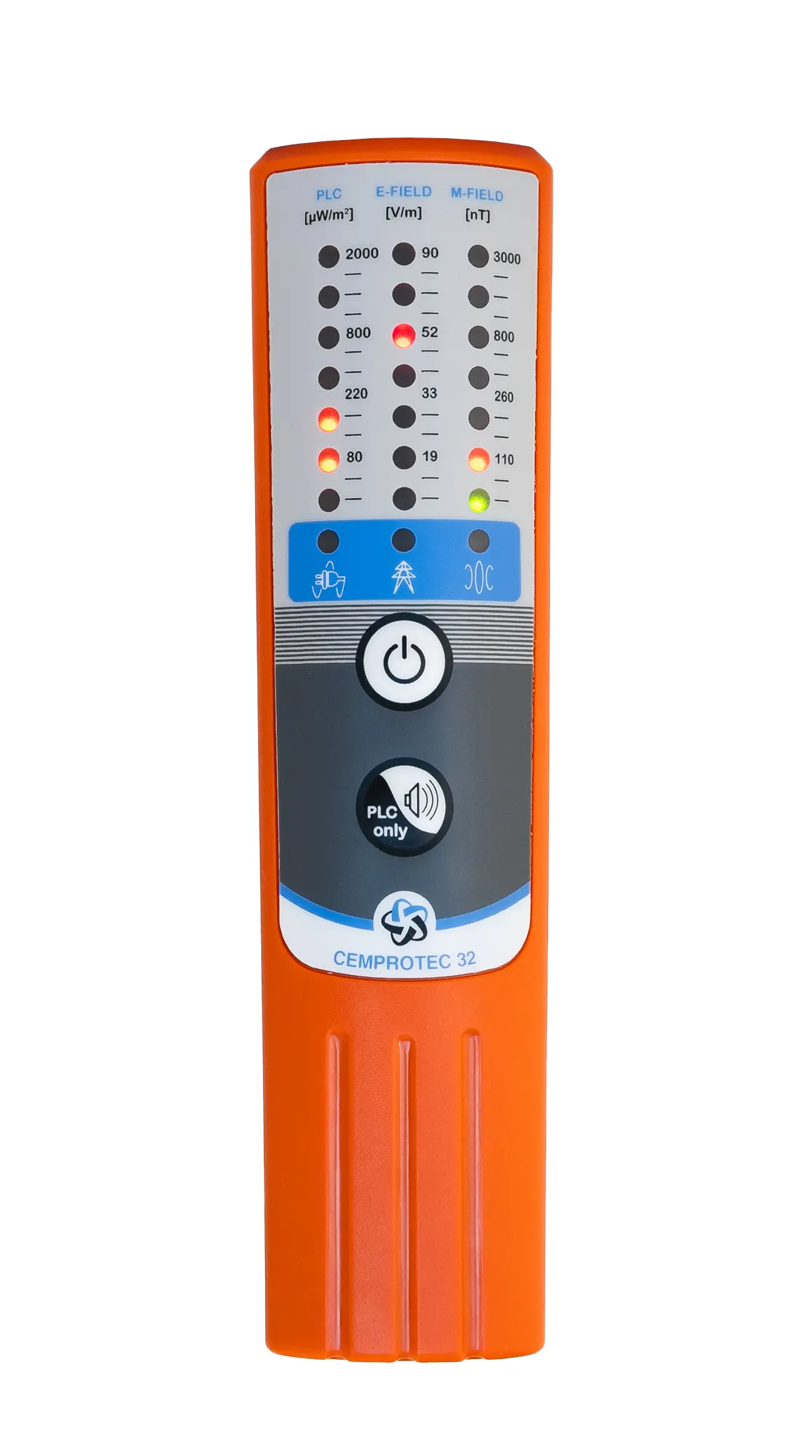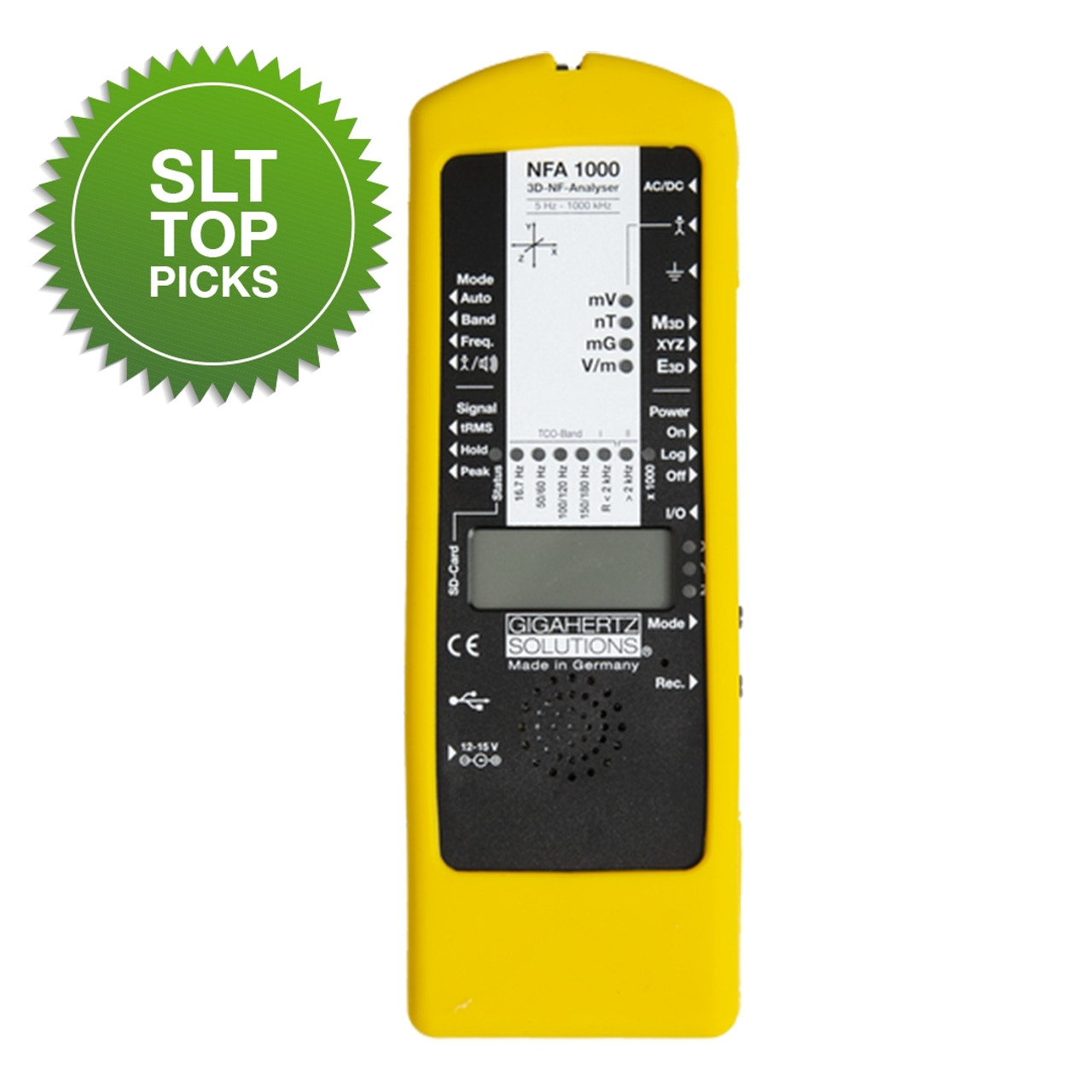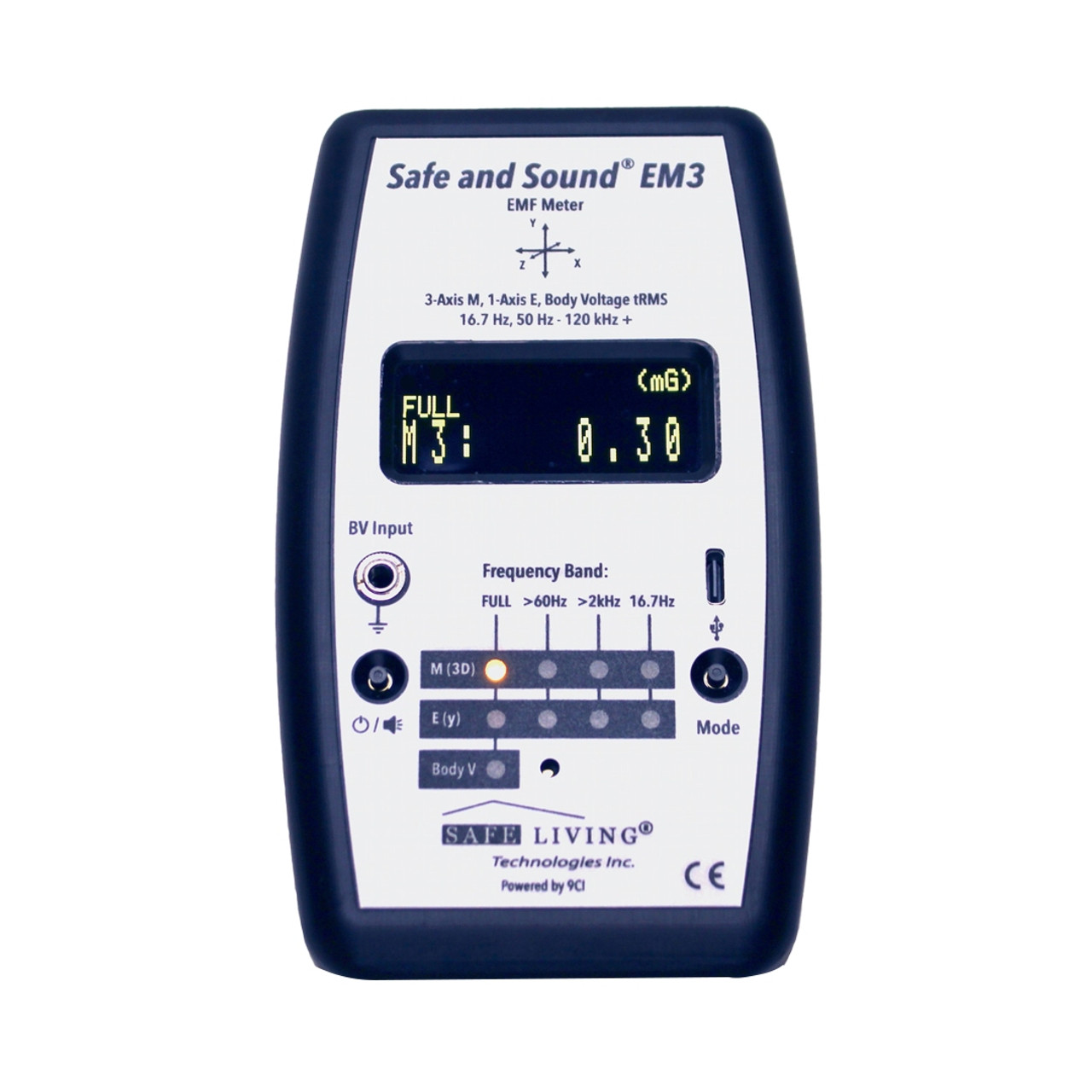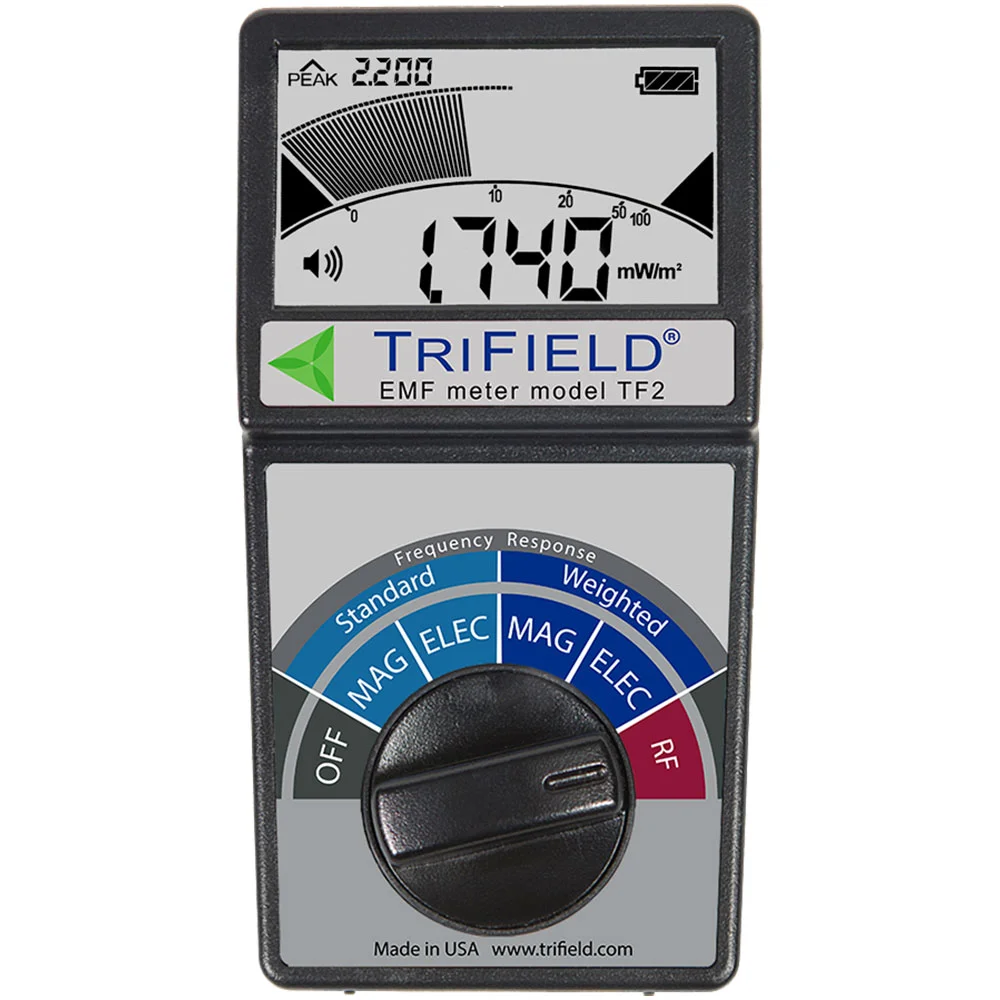Smart Doorbell EMF: Home Security vs. Health Concerns
Smart doorbells and smart security systems have revolutionized home protection, offering unprecedented convenience and peace of mind through advanced features like real-time video monitoring, motion detection, and remote communication. However, these wireless devices rely on Wi-Fi, Bluetooth, and cellular connections that emit electromagnetic field (EMF) radiation continuously, often requiring 24/7 wireless connectivity to function properly. As millions of homes now feature these smart security devices, understanding the balance between enhanced safety and potential EMF exposure becomes increasingly important for health-conscious homeowners.
The Smart Doorbell Dilemma
Smart and other smart doorbells offer compelling security benefits through features like package detection, facial recognition, and remote monitoring. However, these devices emit EMF radiation through multiple wireless technologies and often require your home's Wi-Fi to remain active 24 hours a day, significantly increasing your household's total electromagnetic exposure.
Understanding Smart Doorbell EMF Emissions
How Smart Doorbells Generate EMF Radiation
Smart doorbells and similar smart security devices emit EMF radiation through several wireless technologies: Wi-Fi connections for internet access and cloud storage, Bluetooth for device pairing and local communication, and in some models, cellular connectivity for backup communication when Wi-Fi is unavailable.
Multiple Radiation Sources in One Device
Unlike simple electronic devices, smart doorbells are sophisticated wireless computers that integrate multiple EMF-emitting technologies. Wi-Fi connectivity provides the strongest signal for video streaming and cloud storage, Bluetooth enables device setup and communication with smartphones, and motion sensors use additional electromagnetic frequencies for detection capabilities.
Continuous EMF Exposure Concerns
Smart doorbells differ from many other wireless devices because they operate continuously, maintaining constant connections to monitor for motion, record video, and provide instant notifications. This results in persistent EMF emissions at your home's entrance, an area where family members frequently pass by and children often play.
EMF Health Research and Smart Home Devices
WHO Classifications and Health Implications
The World Health Organization's International Agency for Research on Cancer has classified radiofrequency electromagnetic fields as "possibly carcinogenic to humans." This classification encompasses all wireless devices that emit RF radiation, including smart doorbells, security systems, and home automation devices.
Recent Research on Wireless Radiation Effects
2024-2025 research has confirmed that EMF exposure consistently triggers the formation of excessive reactive oxygen species (ROS), which damage cell membranes, proteins, and DNA. Scientists have verified that wireless radiation exposure below current regulatory limits causes measurable biological effects, including disruptions in mitochondrial function and neurological changes.
- Oxidative stress: EMF exposure increases harmful free radicals in the body
- Neurological disruption: Changes in brain wave patterns affecting attention and memory
- Sleep disturbances: Disruption of natural circadian rhythms and melatonin production
- Cellular damage: Impact on DNA and cellular repair mechanisms
- Immune system effects: Potential compromise of natural defense systems
Cumulative Exposure from Smart Home Devices
The concern with smart doorbells extends beyond individual device emissions to their contribution to total household EMF exposure. When combined with Wi-Fi routers, smart thermostats, security cameras, and other connected devices, the cumulative radiation levels can significantly exceed what our ancestors experienced.
Smart Doorbell Specific Considerations
Smart Doorbell's Wireless Requirements
Smart doorbells require robust wireless connectivity to function effectively. Most models need constant Wi-Fi access for cloud storage, real-time notifications, and video streaming. This necessity often forces homeowners to maintain 24/7 wireless networks, even those who might otherwise prefer to limit their EMF exposure during sleep hours.
Battery vs. Wired Models
While battery-powered Smart doorbells offer installation flexibility, they may actually emit more EMF radiation as they work harder to maintain connections and conserve power. Wired models typically provide more stable connections but require electrical installation and continuous power consumption.
Data Privacy and EMF Intersection
Beyond EMF concerns, Smart devices raise additional health-related privacy issues. Constant wireless transmission of video and audio data creates multiple potential vulnerabilities, and the requirement for persistent internet connectivity increases both EMF exposure and cybersecurity risks.
Smart Doorbell EMF Reduction Strategies
Minimizing EMF While Maintaining Security
Optimize Device Placement
Position smart doorbells away from frequently used areas like living rooms or children's play spaces. Ensure adequate distance from bedroom windows and seating areas.
Configure Motion Sensitivity
Adjust motion detection settings to reduce unnecessary activations. Lower sensitivity settings can decrease the frequency of wireless transmissions while maintaining security effectiveness.
Limit Cloud Storage Dependencies
Choose models with local storage options when possible to reduce constant cloud connectivity requirements and wireless data transmission.
Implement Wi-Fi Scheduling
Use Wi-Fi timers or smart switches to turn off wireless networks during sleeping hours, though this may limit some smart doorbell functionality.
Consider Wired Alternatives
Explore hardwired security systems that can provide similar functionality without continuous wireless EMF emissions.
Safer Alternatives to Smart Doorbells
Traditional Wired Security Systems
Conventional wired security systems can provide comprehensive home protection without the EMF exposure associated with wireless smart doorbells. These systems use hardwired connections for communication, eliminating the need for continuous wireless transmissions.
Wired Video Doorbell Options
Some manufacturers offer video doorbells that can operate with wired connections, such as the Smart Doorbell Video Doorbell Elite, which can use ethernet cable connectivity. However, it's important to verify that wireless capabilities can be completely disabled, as some models may continue to emit EMF even when wired.
Low-EMF Security Alternatives:
- Traditional wired doorbells: Simple, effective, and completely EMF-free notification systems
- Hardwired security cameras: Direct ethernet connections eliminate wireless radiation
- Motion-activated lighting: Deter intruders without continuous EMF emissions
- Physical security measures: High-quality locks, security doors, and lighting improvements
- Neighborhood watch programs: Community-based security without technological dependencies
Hybrid Security Approaches
Balancing Security and Health
For homeowners who value both security and EMF reduction, hybrid approaches can provide effective protection while minimizing wireless radiation exposure. These strategies combine traditional security methods with selective use of smart technology.
Selective Smart Device Integration
Rather than adopting a fully connected smart home ecosystem, consider using smart security devices only where absolutely necessary. This might include a single smart doorbell while maintaining traditional wired security for other entry points.
- Primary entrance smart doorbell with EMF mitigation measures
- Traditional wired doorbells for secondary entrances
- Hardwired security cameras for property monitoring
- Smart locks with local-only operation capabilities
- Motion-sensor lighting on automatic timers
Installation and Configuration Best Practices
EMF-Conscious Installation Guidelines
Distance Optimization
Install smart doorbells at least 10 feet away from frequently occupied indoor spaces. Avoid placement near bedroom windows or children's rooms.
Signal Strength Management
Ensure strong Wi-Fi signal strength at the installation location to minimize device power consumption and EMF output while maintaining functionality.
Feature Minimization
Disable unnecessary wireless features and smart integrations. Use only essential functions to reduce overall EMF emissions and wireless communications.
Professional Assessment
Consider hiring a certified EMF professional to measure radiation levels after installation and recommend optimization strategies.
Health Considerations for Families
Children and EMF Sensitivity
Children may be more vulnerable to EMF exposure due to their developing nervous systems and thinner skulls. Smart doorbells installed near play areas, bedroom windows, or main entryways where children frequently pass should be evaluated for potential health impacts.
Electromagnetic Hypersensitivity (EHS)
Approximately 10% of the population experiences electromagnetic hypersensitivity, with symptoms that may include headaches, fatigue, concentration difficulties, and sleep disturbances. For EHS-sensitive individuals, smart doorbells can significantly impact quality of life and may necessitate alternative security solutions.
Long-term Exposure Considerations
- Cumulative effects of 24/7 EMF exposure from multiple smart devices
- Potential interactions between EMF exposure and other environmental stressors
- Unknown long-term health effects of chronic low-level wireless radiation
- Individual variations in EMF sensitivity and biological response
- Importance of precautionary approaches for vulnerable populations
Cost-Benefit Analysis: Security vs. Health
Evaluating Trade-offs
When weighing the benefits of smart doorbell security features against potential EMF health concerns, consider both immediate security needs and long-term health implications. The decision should account for individual health sensitivity, household composition, and available alternatives.
Security Benefits of Smart Doorbells:
- Real-time monitoring and notifications of visitor activity
- Package theft deterrence and delivery monitoring
- Remote communication capabilities with visitors
- Evidence collection for security incidents
- Integration with broader home security systems
- Convenience for busy households and frequent travelers
Health and Environmental Considerations:
- Continuous EMF radiation exposure for all household members
- Contribution to overall household electromagnetic pollution
- Potential cumulative health effects from multiple wireless devices
- Privacy concerns related to constant wireless data transmission
- Dependency on wireless infrastructure for basic security
- Environmental impact of electronic device production and disposal
Future Trends and Alternatives
Emerging Low-EMF Security Technologies
As awareness of EMF health concerns grows, security technology manufacturers are beginning to explore lower-radiation alternatives. These may include improved wired connectivity options, more efficient wireless protocols, and hybrid systems that minimize continuous EMF emissions.
Innovation in Secure, Low-EMF Home Protection
Future security solutions may include fiber optic connections for ultra-fast, EMF-free data transmission, AI-powered analytics that reduce the need for constant connectivity, solar-powered devices with minimal wireless requirements, and advanced physical security features that don't rely on wireless technology.
Making an Informed Decision
Decision Framework for Smart Doorbell Adoption
- Assess actual security needs: Evaluate whether smart features address real security concerns or merely provide convenience
- Consider household composition: Account for children, elderly family members, and EMF-sensitive individuals
- Evaluate alternatives: Research traditional and hybrid security options that meet protection goals
- Measure current EMF levels: Use professional assessment to understand existing electromagnetic exposure
- Plan for optimization: Develop strategies to minimize EMF exposure while maintaining security benefits
- Regular reassessment: Periodically review the balance between security benefits and health considerations
Professional Consultation Benefits
Consulting with certified EMF professionals and security experts can provide valuable insights for making informed decisions about smart doorbell installation and optimization. These professionals can measure EMF levels, recommend mitigation strategies, and suggest alternative security solutions tailored to individual needs and health concerns.
Conclusion
Smart doorbells and smart security systems offer undeniable benefits for home protection and convenience, but they also introduce continuous EMF exposure that warrants careful consideration. The decision to install these devices should balance legitimate security needs against potential health implications, especially for households with children or EMF-sensitive individuals.
Key Takeaways for Homeowners
- Smart doorbells emit EMF radiation 24/7 through multiple wireless technologies
- These devices contribute to cumulative household electromagnetic exposure
- Traditional wired security systems can provide effective protection without EMF concerns
- Hybrid approaches can balance security benefits with health-conscious choices
- Installation placement and configuration significantly impact EMF exposure levels
- Individual health sensitivity should guide decision-making about smart device adoption
- Regular assessment of security needs vs. health priorities ensures optimal choices
Whether you choose to embrace smart doorbell technology with EMF mitigation strategies, opt for traditional wired security systems, or implement a hybrid approach, the most important factor is making an informed decision based on your specific security needs, health priorities, and family circumstances. As research continues to evolve and technology advances, maintaining awareness and adaptability in your home security choices serves both your safety and wellness interests.



